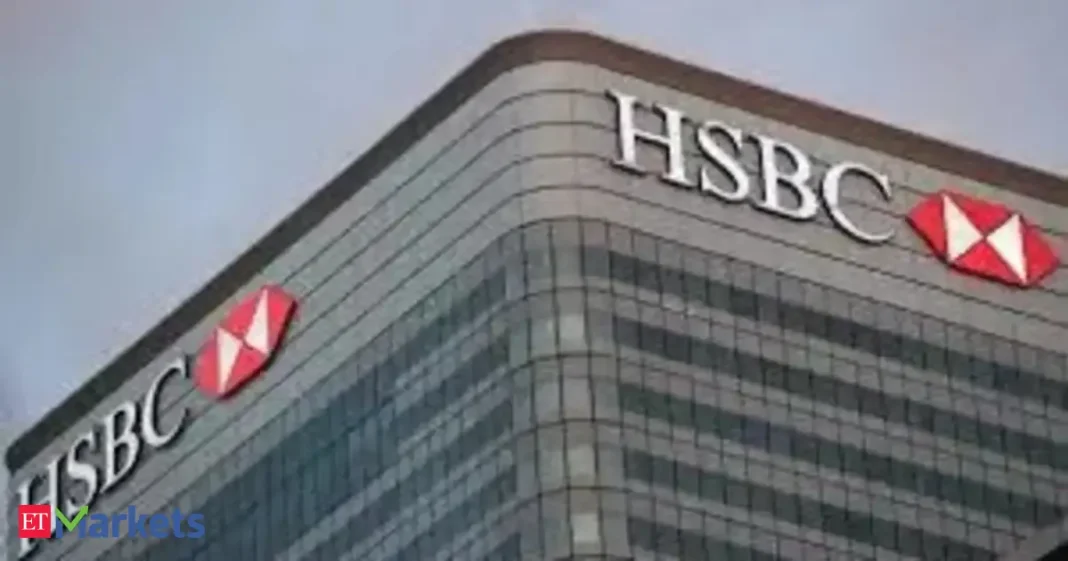In a significant validation of India’s burgeoning economic prospects, global banking giant HSBC has announced a strategic shift in its investment focus, viewing the Indian market as a crucial avenue to diversify its holdings away from an increasingly crowded artificial intelligence (AI) landscape. This pivot is accompanied by an ambitious forecast: the Sensex, India’s benchmark equity index, is projected to hit 94,000 by the end of 2026. This outlook underscores a growing confidence among international financial institutions in India’s long-term growth story, positioning it as a standout performer in the global economy.
HSBC’s Strategic Pivot: Diversifying Beyond the AI Boom
The global technology sector, particularly AI, has witnessed unprecedented growth and investment over the past few years, leading to what many analysts now perceive as crowded trades and potentially stretched valuations. As companies worldwide rush to capitalize on AI’s transformative potential, finding differentiated growth opportunities becomes increasingly challenging for large institutional investors.
HSBC’s decision to actively seek diversification away from these saturated AI holdings and into India reflects a calculated strategy. The bank recognizes India’s unique position as a vast, domestically driven economy with robust fundamentals, offering a stark contrast to the often-volatile, sentiment-driven tech markets. India’s demographic dividend, a burgeoning middle class, ongoing structural reforms, and significant government investment in infrastructure and manufacturing present a compelling narrative for sustainable, broad-based economic expansion.
For HSBC, the move is about capital reallocation into markets offering fundamental value and organic growth potential, rather than chasing the next big tech wave. India’s financial markets have shown remarkable resilience and growth, attracting consistent foreign direct investment (FDI) and a surging domestic retail investor base. This blend of stability and dynamism makes India an attractive counterweight to the concentrated bets in the AI space, providing a crucial element of risk mitigation and long-term value creation.
Sensex 94,000 by 2026: An Ambitious Yet Grounded Projection
HSBC’s projection of the Sensex reaching 94,000 by the close of 2026 is a bold statement, yet it aligns with several underlying factors shaping India’s economic trajectory. This optimistic outlook is primarily anchored in strong corporate earnings growth, which is expected to be a significant driver for equity markets. Analysts anticipate double-digit earnings growth for Indian corporates, fueled by improving consumer demand, increased industrial activity, and a stable policy environment.
Beyond earnings, India’s macroeconomic stability plays a pivotal role. The country has demonstrated commendable fiscal management, moderating inflation, and a resilient currency. Government initiatives like the Production Linked Incentive (PLI) schemes are boosting domestic manufacturing, while a continued push towards digitalization is enhancing productivity across sectors. Furthermore, India’s deepening capital markets and increasing domestic institutional investment provide a strong cushion against global market volatility.
Elaborating on this perspective, a senior analyst at HSBC Global Research noted, “India’s structural growth drivers – robust domestic consumption, government focus on infrastructure, and a young, aspirational demographic – offer a compelling diversification story. Amidst global uncertainties and potentially stretched valuations in specific tech segments, India stands out with its predictable growth trajectory and improving corporate fundamentals, making the Sensex target achievable.” This statement highlights the confluence of factors that reinforce the bullish sentiment.
While the target represents a significant upside from current levels, it’s not without its considerations. Global economic slowdowns, geopolitical tensions, and domestic policy shifts could introduce headwinds. However, the prevailing sentiment, as echoed by HSBC, is that India’s intrinsic strengths and reform momentum are strong enough to navigate these challenges and deliver substantial returns over the medium term.
India’s Diverse Growth Story: Beyond Tech
The allure of India for investors like HSBC extends far beyond just its potential for market appreciation. It encompasses a diverse growth story that touches upon various sectors. While global attention might be fixated on generative AI, India offers robust opportunities in traditional sectors like financials, manufacturing, consumer discretionary, and infrastructure. The nation’s significant investments in renewable energy and green infrastructure also present emerging avenues for sustainable growth.
The banking sector, for instance, benefits from a clean-up of non-performing assets and increasing credit demand. Manufacturing is seeing a revival thanks to ‘Make in India’ initiatives and global supply chain diversification strategies. The consumption story remains strong, driven by rising disposable incomes and changing lifestyle patterns. This broad-based economic activity minimizes reliance on any single sector, providing a more balanced and resilient investment landscape compared to markets heavily concentrated in specific technological niches.
Conclusion
HSBC’s decision to pivot towards India, coupled with its optimistic Sensex target of 94,000 by 2026, marks a significant endorsement of India’s economic prowess and its potential as a global investment hub. This strategic move highlights a conscious effort to diversify portfolios away from crowded AI plays, seeking instead the fundamental strength and diverse growth opportunities that India offers. As the global economic landscape continues to evolve, India’s unique combination of domestic demand, structural reforms, and demographic advantages positions it strongly to attract further foreign capital, reinforcing its trajectory towards becoming a major global economic power.




